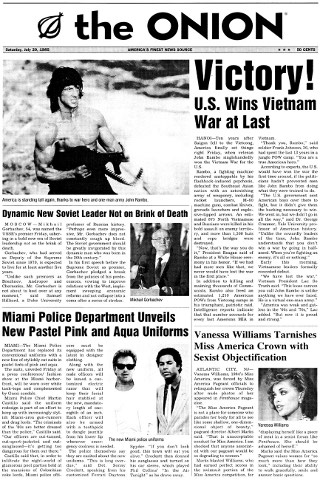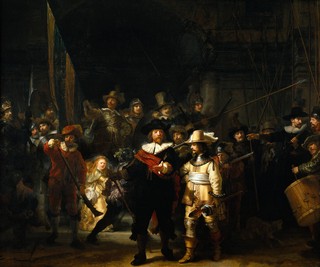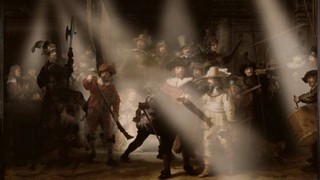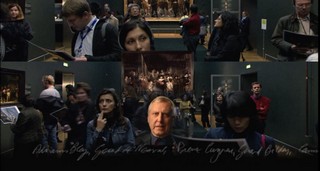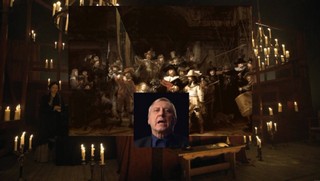SF Book Review, Part 4
It’s been a while since I posted one of these. Some of the below aren’t quite SF, but they’re close enough. For more SF, check out Part 1, Part 2 and Part 3.
- The Dispossessed by Ursula K. Le Guin: Because of the recommendation of long-time Kaedrin friend Sovawanea, I picked up two Le Guin books. The first was The Left Hand of Darkness, which I really enjoyed. In The Dispossessed, Le Guin covers much of the same thematic ground, but in a much more blatant way.
The book is set on the planet Urras and its moon Anarres. About 200 years before the events of the book, a group of anarchists lead by a woman on Urras named Odo were given the right to colonize the moon. The Odonians made their way to the moon and cut themselves off from the rest of the universe. Theoretically, it’s a non-authoritarian communist society, with no property and no formal government. In practice, things are a little more complicated. The story follows a physicist named Shevek. He’s working on a General Temporal Theory, but no one on Anerres understands his work and indeed, many stand in his way. So he makes the choice to travel to Urras. The physicists there understand his work and are also in touch with alien societies like the Terrans and the Hainish. Urras is pretty clearly supposed to represent Earth during the 1960s and early 1970s, even if the technology is more advanced. There are two main powers on Urras. A-Io represents the United States and Thu represents the Soviet Union. During the course of the story, there’s even a proxy war in Benbili, which is clearly meant to be Vietnam.
The book’s prose has an artistry lacking in a lot of SF of the era, yet it remains straightforward enough to remain accessible. I also found the structure of the book interesting. Each chapter alternates between Shevek’s experiences on Urras and the events on Anarres leading up to his trip. Interestingly, this non-linear structure reinforces the physics of time that Shevek is attempting to work out (i.e. his theories eschew the common notion of time being linear). Unfortunately, I found the clear allusions to the US vs Soviet Union to be a bit too bald for my tastes. A good portion of the book consists of various lectures on the nature of government and property and communism, which I found a bit grating. On the one hand, I found most of the specifics of A-Io and Anarres to be unconvincing. On the other hand, I have a certain respect for thought experiments in this vein (for example, Heinlein’s Starship Troopers literally contains lecturing on various political stances). I don’t think Anarres is a place that could ever exist in reality, for instance. By the end of the novel though, this feeling was not nearly as pronounced as it was throughout. The big issue here, though, is that I didn’t really care that much about Shevek. There were times I was rooting for him, but I mostly didn’t care and in one particular instance, I really despised what he was doing (even if he was drunk at the time). In the end, it’s an interesting book, but not really my thing. I don’t think it’s soured me on Le Guin, though it has tempered my enthusiasm. In a lot of ways, The Left Hand of Darkness explores similar territory with respect to societal structures, government and even sexuality, but it does so with much more subtlety and depth. One thing I can say about The Dispossessed is that it made me appreciate The Left Hand of Darkness more… and I would certainly recommend that novel over The Dispossessed.
- The Man in the High Castle by Philip K. Dick: I’d actually never read a Philip K. Dick novel before this one, which I found to be quite interesting, if a little inconclusive. It’s an alternate history novel (a subject that’s come up recently here) but what really sets it apart from the others I’ve seen is the notion of recursion. In this novel, the Axis powers won WWII and have occupied the United States. The story mostly takes place on the West Coast, where the Japanese run things. There are references to the Nazi occupied East Coast, but we don’t really see anything there. The most interesting thing about the book, though, is the recursive book-within-abook. There’s a man in this novel who has written an alternate history book of his own – one in which the Allies won WWII (that book does not match our reality though). That author is the titular man in the High Castle, and several of the characters in the book have read his novel-within-the-novel, driving various plots forward. The notion being explored here is that there isn’t a singular reality, but many, and that we’d all be better for considering more than our own conception of reality. Dick writes with a lot of soul here. Like Le Guin, there’s more artistry in his prose than in a lot of other SF, and the storytelling isn’t quite as straightforward either. This novel contains a lot of interesting elements, including assassination attempts, love affairs, nuclear war plots, antiques forgery, spies and espionage, and yet, the book does not feel like a story that contains those elements. It seems much more concerned with the way various characters cope with living in a totalitarian regime, and much of the novel focuses on the tone and atmosphere of a Japanese occupied America. I have to admit, it’s a convincing portrait. Dick doesn’t go to cartoonish lengths to demonstrate the world and as a result, it seems oddly realistic. There’s not much closure in the end, but there are some interesting happeneings and it was an intriguing read nonetheless.
- Angelmass by Timothy Zahn: Another page-turner from Zahn, and I have to admit that he’s become a standard fallback for me. Whenever I get burnt out on the thematic complexities of various novels and want something more entertaining that will turn the pages fast, I know I can count on Zahn. In this story, we get something a little different than the typical Space Opera story that Zahn seemingly specializes in… There’s a scientist who is enlisted as a spy and a con girl and a nice cast of supporting characters, all focussed around a stable black hole which emits particles dubbed as Angels. When placed in proximity to humans, these Angels seem to induce calm, reasonable feelings. They even seem capable of rendering humans incapable of lying. Of course, there are two major governments in the story. One has embraced the Angels, requiring its members to carry an Angel at all times. The other sees the Angels as an alien plot to control humanity. I have to admit that I didn’t find this to be a very compelling idea at first, but Zahn has a knack for page turning stories, and this is no exception. About 15 years ago, I read Zahn’s Conqueror’s Trilogy, which I remember really enjoying – and I think I’m going to revisit that series again next.
- John Dies at the End by David Wong: You might recognize the name David Wong from his work as the editor of cracked.com and his brilliant articles like The Ultimate War Simulation Game, Life after the Video Game Crash, and Was 9/11 an Inside Job?. In this novel, Wong is in fine form, though it is far from a perfect effort. It’s really more of a horror/comedy novel than anything else, but it does skirt the boundaries of SF and explore some SF ideas. The plot would be tough to describe in a short space, but there’s a number of funny and entertaining set pieces, my favorite being an encounter in a shopping mall where the titular John intuits that they are basically living in an FPS video game, thus finding health packs and shotgun ammo in various crates, etc… It’s a great sequence, and there are a bunch of them throughout the novel, but at the same time, there’s a distinctive lack of connective tissue here. The book reads more like a semi-connected series of one-off stories, and there’s not really a conclusive ending, though despite the book’s title, I found myself quite surprised at what happened to John. It’s all good fun and I enjoyed it for what it was, but it isn’t really anchored by anything and it doesn’t really go anywhere in the end. This isn’t necessarily a terrible thing, and Wong’s humor certainly keeps the pages turning, so it does have a lot going for it (it’s got a certain cult sensibility), but I was expecting more.
- Alice’s Adventures in Wonderland and Through the Looking Glass by Lewis Carroll: It’s been many years since I read this, and I have to wonder if most of it didn’t just fly over my head the first time. There isn’t much of a story to either book – they’re really just a series of encounters with strange and fantastical creatures that give Caroll, a mathematician, the chance to play word games and explore things like formal logic, philosophy, and history. What we end up with is a series of non sequiturs that can be entertaining at times but which can also be a little hard to read. That being said, I can see why it’s so influential. The reason I wanted to reread this book was Tim Burton’s film version, a movie I never got around to seeing (more because I’m not a big fan of Burton than for any other reason). It’s not one of my favorite books, but it certainly has its moments.
That wraps things up for now. Currently reading Zahn’s Conqueror’s Trilogy and working my way through my backlog of book purchases (I’ve built up a stack of unread novels and non-fiction that I’ve resolved to finish reading before purchasing anything new). I’ve only gotten through about half the books I’ve posted about wanting to read, but I’ve got many of them sitting on my shelf right now, so hopefully I can work my way through them pretty quickly.

